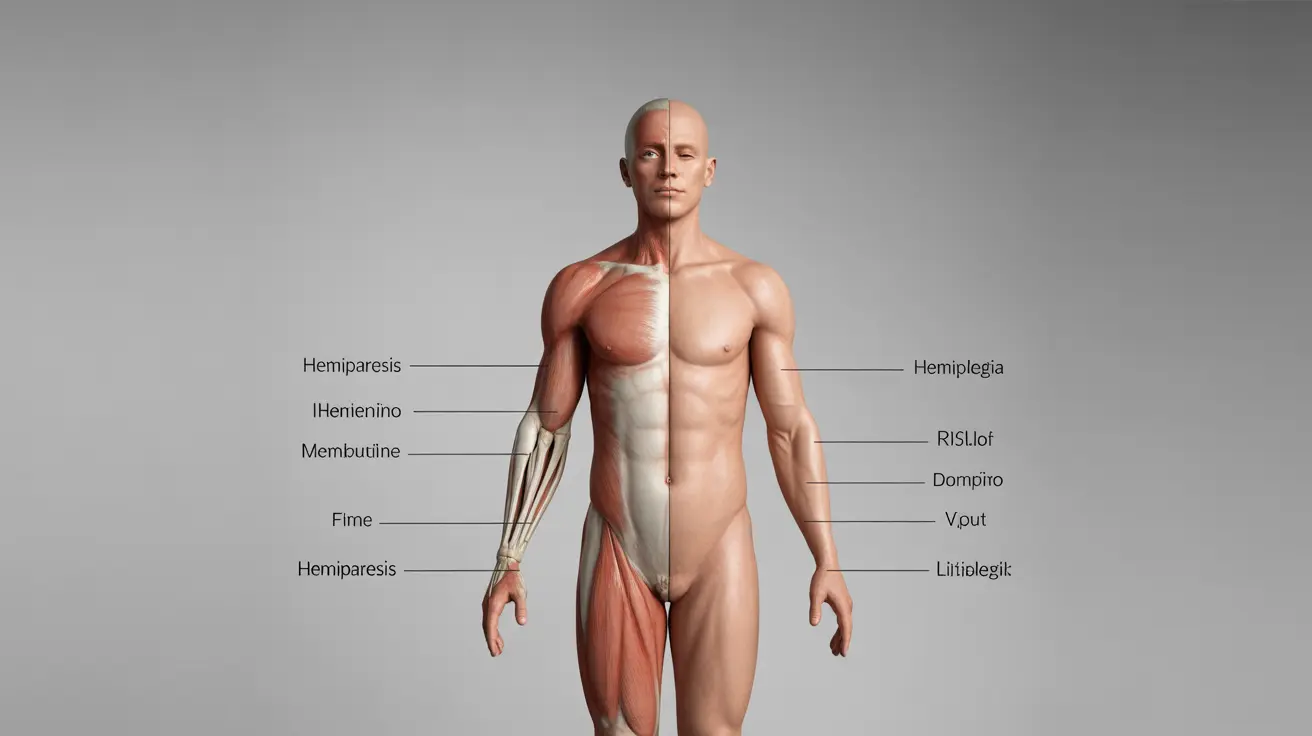When someone experiences weakness or paralysis on one side of their body, they may be diagnosed with either hemiparesis or hemiplegia. While these conditions share some similarities, understanding their distinct characteristics is crucial for proper diagnosis, treatment, and recovery expectations. This comprehensive guide explores the key differences between hemiparesis and hemiplegia, their causes, symptoms, and available treatment options.
Defining Hemiparesis and Hemiplegia
Hemiparesis refers to weakness on one side of the body, where some muscle function and movement remain intact. In contrast, hemiplegia involves complete paralysis of one side of the body, resulting in a total loss of voluntary muscle movement in the affected areas.
Key Differences in Symptoms and Impact
Hemiparesis Symptoms
People with hemiparesis typically experience:
- Muscle weakness on one side
- Difficulty with fine motor skills
- Reduced grip strength
- Impaired balance and coordination
- Challenges with daily activities
- Possible facial drooping
Hemiplegia Symptoms
Those affected by hemiplegia usually face:
- Complete loss of movement on one side
- Total paralysis of affected limbs
- Inability to control facial muscles on one side
- Significant balance issues
- Complete loss of grip strength
- Major challenges with mobility and self-care
Common Causes and Risk Factors
Both conditions can result from various neurological events or conditions, including:
- Stroke
- Traumatic brain injury
- Brain tumors
- Multiple sclerosis
- Cerebral palsy
- Infections affecting the brain
Diagnosis and Assessment
Healthcare providers use various diagnostic tools to evaluate these conditions:
- Neurological examination
- MRI or CT scans
- Physical capability assessments
- Muscle strength testing
- Range of motion evaluations
Treatment Approaches and Management
Rehabilitation Strategies
Treatment typically involves a comprehensive rehabilitation program including:
- Physical therapy
- Occupational therapy
- Speech therapy (if speech is affected)
- Assistive devices and mobility aids
- Medication management
- Botulinum toxin injections for spasticity
Long-term Management
Ongoing care often includes:
- Regular exercise programs
- Continuous physical therapy
- Adaptive equipment usage
- Home modifications
- Psychological support
- Regular medical monitoring
Recovery Outlook and Prognosis
Recovery potential varies significantly between individuals and depends on factors such as:
- The underlying cause
- Severity of the condition
- Timing of treatment initiation
- Consistency of rehabilitation efforts
- Overall health status
- Age and physical condition
Frequently Asked Questions
What are the main differences between hemiparesis and hemiplegia?
Hemiparesis involves weakness on one side of the body with some remaining muscle function, while hemiplegia means complete paralysis on one side with no voluntary movement possible in the affected areas.
What symptoms should I expect with hemiparesis versus hemiplegia?
Hemiparesis symptoms include muscle weakness, reduced grip strength, and difficulty with coordination. Hemiplegia symptoms are more severe, involving complete paralysis, total loss of voluntary movement, and significant mobility challenges on the affected side.
What causes hemiparesis and hemiplegia, and how are they diagnosed?
Both conditions can be caused by stroke, brain injury, tumors, or neurological conditions. Diagnosis involves neurological examinations, brain imaging (MRI/CT scans), and detailed physical assessments of muscle strength and movement capabilities.
How are hemiparesis and hemiplegia treated and managed after a stroke or brain injury?
Treatment typically involves comprehensive rehabilitation including physical therapy, occupational therapy, speech therapy if needed, and the use of assistive devices. Management may also include medications, botulinum toxin injections for spasticity, and ongoing therapeutic exercises.
Can people recover movement with hemiparesis or hemiplegia, and what affects their prognosis?
Recovery potential varies depending on the underlying cause, severity, timing of treatment, and individual factors. While hemiparesis often has a better prognosis for recovery, both conditions can show improvement with proper rehabilitation and consistent therapy. The extent of recovery is influenced by factors such as age, overall health, and dedication to rehabilitation programs.




